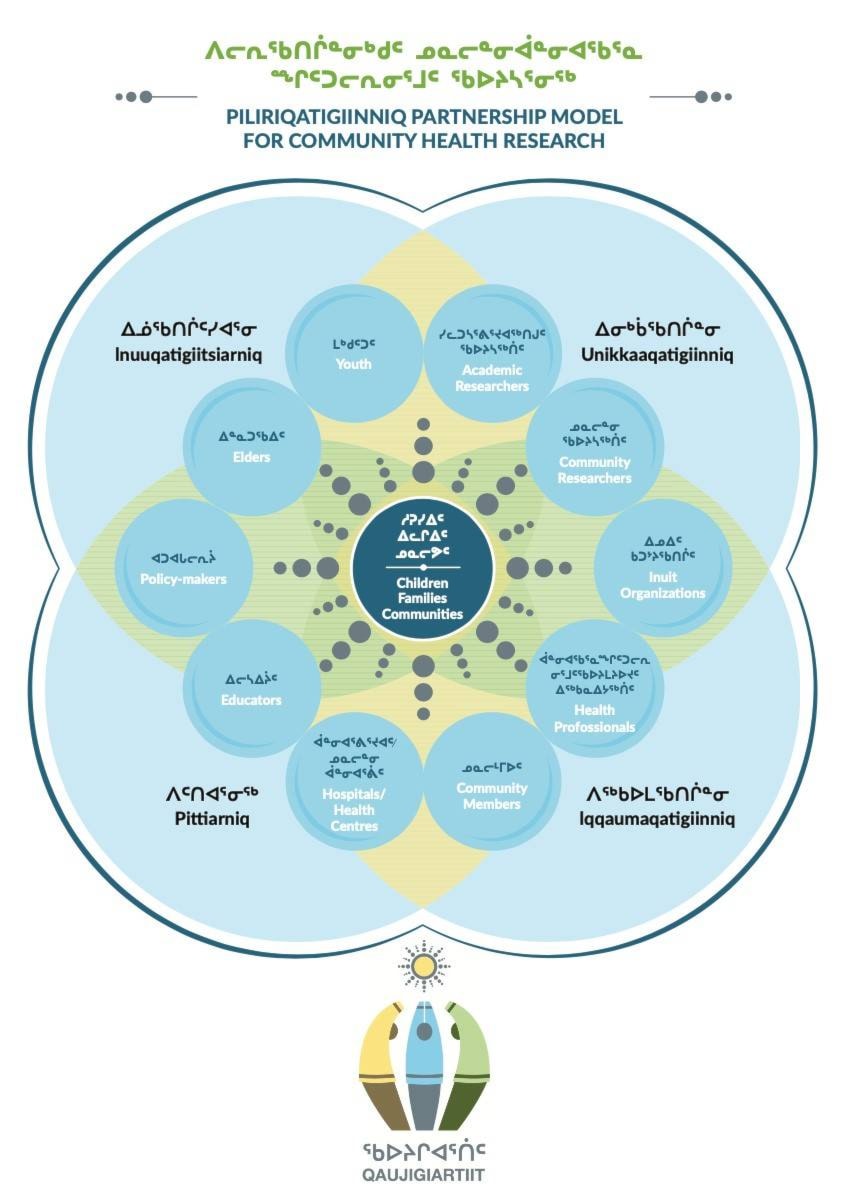Founded by Nunavummiut for Nunavummiut, the Qaujigiartiit Health Research Centre has been active for 15 years, after it’s start in 2006.
Helping enable community-based health research, Qaujigiartiit has been active all over Nunavut and continues to support communities with their questions and concerns.
It grew out of a climate of research that didn’t necessarily fit the health research need of Nunavut’s communities.
“The centre was really growing out of that, we needed research that came out of our communities that addresses our questions that can be used in a meaningful way to address some of the challenges faced by our community members,” said Gwen Healey Akearok, executive and scientific director for the Qaujigiartiit Health Research Centre.
About half of Qaujgiartiit’s work is largely community-based, working with community members conducting locally-based research that in turn help inform the territorial health authorities.
“The Department of Health has a seat on our board, as well as Nunavut Tunngavik Incorporated,” said Akearok with. This means community-level data can more easily be shared where it is needed and appropriate.
The other half of Qaujgiartiit’s work is territorial in scope, for example a study being done on community perspectives on end-of-life care, palliative care, or cancer care.
“We did a project many years ago on sleeping practices in infants in response to some questions,” she said. “As much as possible our information is shared with the different actors with the Department of Health or different Inuit Organizations, communities, or municipalities if appropriate.”
In the early years they didn’t have any academic publications, however in recent years “we’ve been doing that more,” according to Akearok, to help “share what we’re doing with a broader audience, to really showcase just the innovations, the strengths and the capabilities of our communities.”
A new hub for wellness programming
About five years ago work started on the planned Inuusirvik Community Wellness Hub set to be constructed in Iqaluit, a space to bring together not only space for Qaujigiartiit, but also for their programming ranging from land-based programs, Inuit counselling services and suicide prevention, bringing a holistic and unified service delivery model for Inuit once the building is completed.
“We’ve worked for many years to bring evidence-based programs that are based on Inuit-child rearing practices or Inuit perspectives on positive protective factors for adolesants, different pathways for the well-being of communities, all of these programs are confronted with the challenge of not having space,” said Akearok.
“We’re really excited and confident that this type of model can serve as an example for communtities all across the North.”
The building was inspired by an image crafted by the late Andrew Tagak Sr. who helped found Qaujigiartiit.
“He was very good at articulating a vision for everyone working together collaboratively. Inuusirvik was kind of the nickname the discussion generated, now it’s become the actual name of the building.”
Qaujigiartiit published the Piliriqatigiinniq Partnership Model for Community Health Research in it’s formative years, with four Inuit values guiding a number of categories ranging from Hospitals/Health Centres, Academic Research, Inuit Organizations, Community Members and Elders. Children, families and communities have always been at the centre of all of it, driving every project.
“If we’re looking into something and if we’re asking questions about something – what drives it – that model was published and developed by myself, and the late Andrew Tagak Senior, he and I started Qaujigiartiit together.
“All of our work continues on as a part of his legacy.”
Qaujigiartiit among it’s publications and studies have also helped develop two mobile apps, Family Services NU and the Health NU apps.
When looking back, Akearok says all of the interaction between Nunavummiut and getting involved with other people and connecting on a human level is what sticks out to her the most.
“For me reflecting on 15 years, it’s all of the people. All Nunavummiut who have been involved in what we’ve done, thousands of Nunavummiut have attended courses developed by our staff or team, (they) participated in programs and worked with interviewers who developed their own projects.
“Just seeing the learning between Elders and young people, it’s really the thing I cherish the most … all of the human interactions and all of the really exciting and positive energy that you feel in a room when everyone’s working together. That’s been our fuel for the last 15 years as operating as a not-for-profit community-based research centre.”
With one registered nurse on the Qaujigiartiit team, they are also helping out administer vaccines to youth at the upcoming Pfizer walk-in clinic taking place at the curling rink this week.
